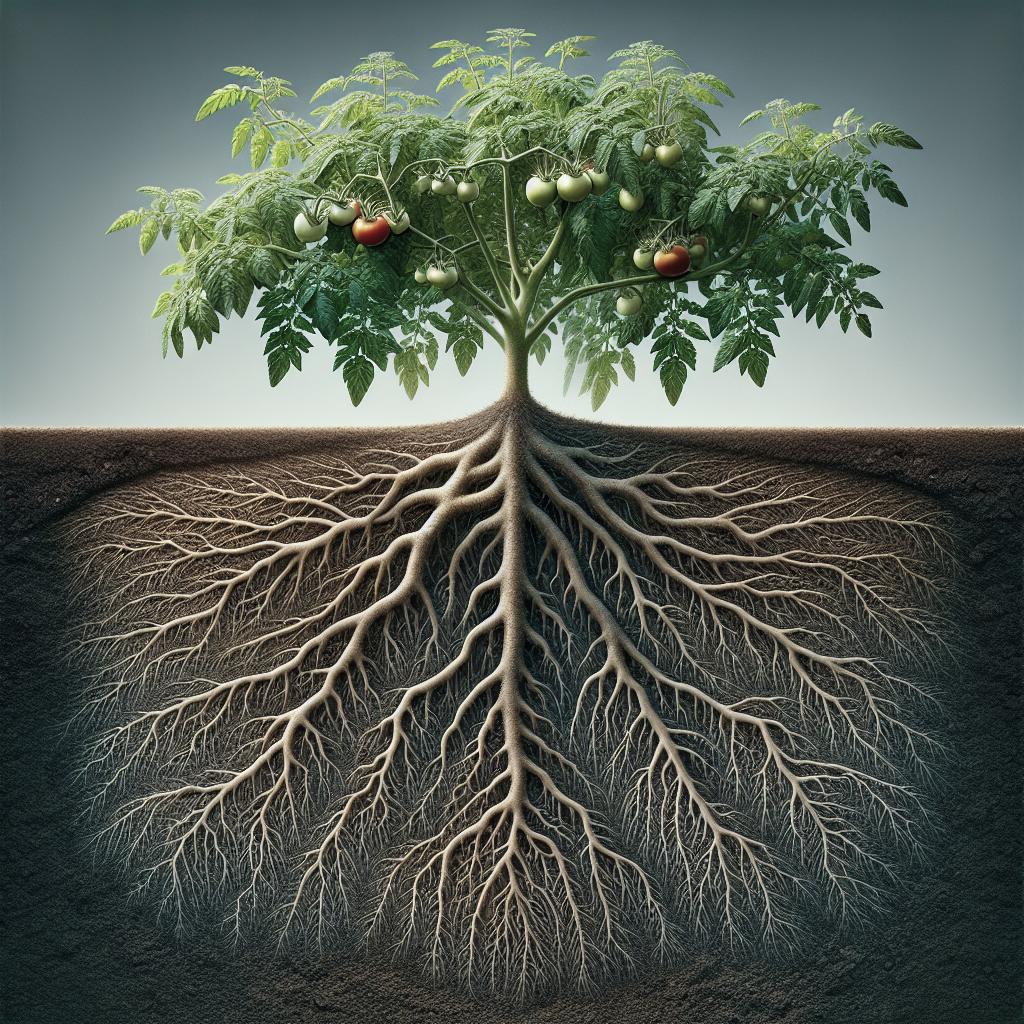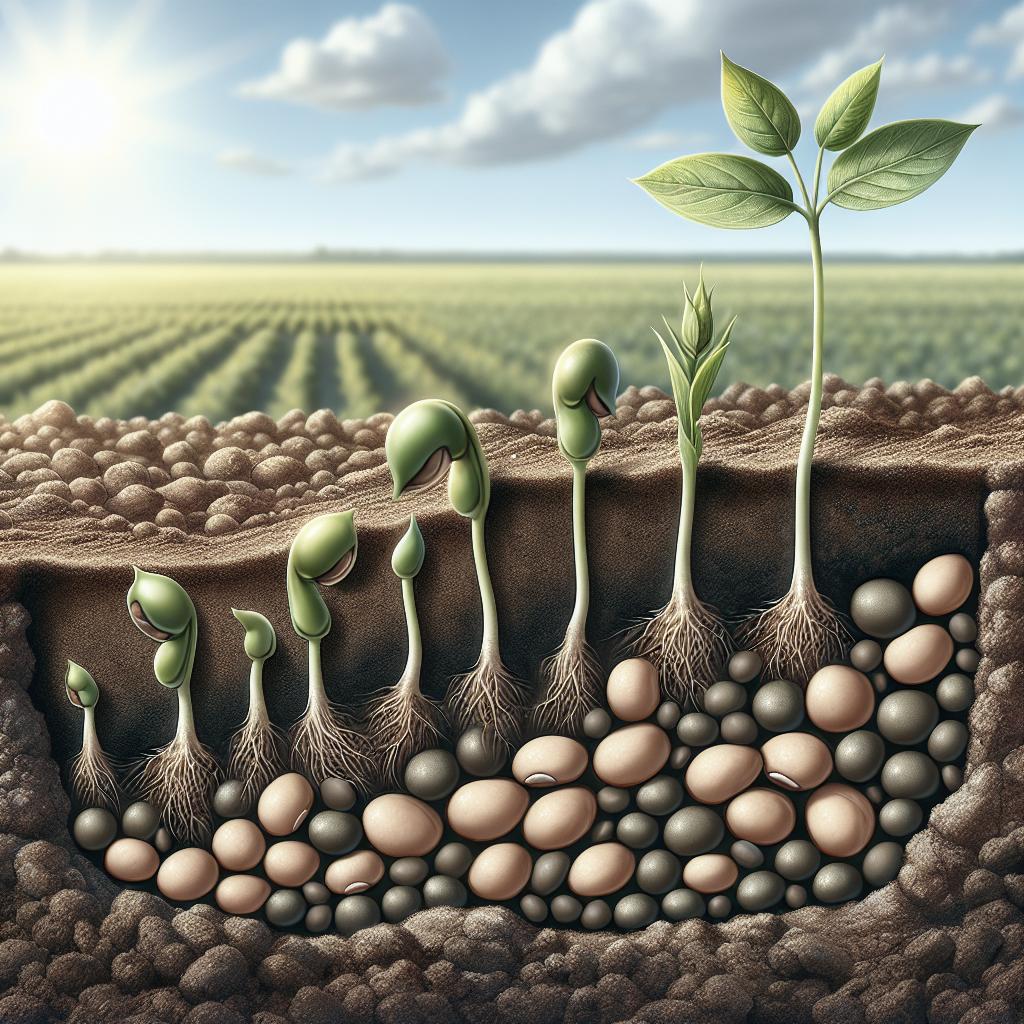Tomatoes are a staple in countless gardens worldwide, celebrated for their juicy fruits and versatility in the kitchen. One aspect of tomato gardening that often sparks debate is the depth at which to plant tomato plants. This blog post delves into the question: How deep do tomato roots grow? By understanding the science behind tomato root systems, evaluating the benefits and drawbacks of deeper planting in various climates like Canada, and mastering proper planting techniques such as “bumping up” and horizontal planting, you’ll be equipped to maximize your tomato harvest. We’ll take a comprehensive look at these topics to help you make an informed decision for your garden.
What Does Science Say About Planting Tomatoes Deeper?
Planting tomatoes deeper than their original growing depth is a technique backed by science. According to various horticultural studies, tomato roots, specifically the adventitious roots, can grow from the stem if it’s buried underground. These roots enhance the plant’s ability to absorb water and nutrients, leading to a more robust structure and increased fruit production. Research conducted by agricultural universities has shown that deep planting can lead to a more extensive root system. A tomato plant typically develops a taproot that can dive as deep as three feet under optimal conditions. However, adventitious roots can grow along the buried stem, increasing the plant’s total root mass. This network of roots can improve the plant’s stability and nutrient uptake.
Is Planting Your Tomatoes Deeper In Canada Worth It?
Canada’s unique climate poses specific challenges to tomato growth, particularly the shorter growing season and cooler temperatures in many regions. Planting tomatoes deeper can be advantageous as it allows the plant to access more warmth from deeper soil layers and provides more stability against strong winds. However, there are downsides to deeper planting in Canada’s variable climate. If the soil is too cold, the buried stem might not develop roots as quickly, potentially stunting early growth. It’s important to wait until the soil temperature reaches at least 60°F (15.5°C) before deep planting to ensure optimal root development and prevent rotting.
Let’s Dive Deeper… With Our Tomato Roots
Going deeper into the topic reveals that the depth to which you plant your tomatoes also depends on soil composition. Well-draining, loamy soil is ideal for deep planting because it allows roots to penetrate deeper without becoming waterlogged. Clay-heavy soils, however, pose a risk as they can retain water and suffocate roots. Additionally, the variety of tomato plants plays a significant role. Indeterminate varieties, which continue growing and producing fruit throughout the season, benefit more from deep planting compared to determinate varieties, which grow to a fixed size. Deeper roots in indeterminate tomatoes will support their larger, more sprawling growth habit.
If You Choose to Plant Tomato Plants Deeper Follow These Rules
1. Start With Healthy Seedlings : Choose robust, healthy seedlings with thick stems and dark green leaves. Weak or leggy seedlings may not adapt well to deeper planting. 2. Remove Lower Leaves : Before planting, remove the leaves from the lower half of the stem. This allows the buried section to develop roots without leaves decomposing underground. 3. Plant At An Angle If Necessary : If the plant is too tall to bury vertically without bending the stem, plant it at an angle or lay it on its side in a shallow trench. The stem will naturally grow upwards toward the light.
Planting Tomatoes Deeper During Bumping Up
“Bumping up” is the process of transplanting seedlings from smaller containers to larger ones before planting them in the garden. Each time you bump up your tomato plants, you have an opportunity to plant them a little deeper in their new containers, encouraging more root development along the stem. When bumping up, gently tease apart the roots if they are root-bound, and position the plant so that part of the stem is buried in the new container. This method ensures that by the time the tomatoes are ready for the garden, they have a well-developed root system.
Planting Tomatoes On Their Side
Planting tomatoes on their side is an alternative to vertical deep planting, particularly useful for leggy seedlings. By digging a horizontal trench and laying the plant sideways, the stem still gets buried, encouraging adventitious root growth along its length. Ensure that the part of the stem with leaves remains above ground and that the buried section is free of foliage. The plant will turn upwards to grow toward the light, developing a strong and resilient root structure in the process.
Future Prospects
By understanding the intricacies of tomato root growth and implementing appropriate planting techniques, gardeners can significantly improve their harvest. Here’s a summary of the key points discussed:
| Aspect | Key Points |
|---|---|
| Scientific Basis | Adventitious roots can grow from buried stems, enhancing nutrient uptake and stability. |
| Canadian Climate Considerations | Deep planting can be beneficial but requires warm soil temperatures to avoid stunted growth. |
| Soil and Variety Impact | Well-draining, loamy soil is ideal; indeterminate varieties benefit more from deep planting. |
| Proper Planting Techniques | Choose healthy seedlings, remove lower leaves, and plant at an angle or horizontally if needed. |
| Bumping Up | Transplanting deeper each time boosts root mass before final garden planting. |
| Horizontal Planting | Laying the stem sideways can help leggy seedlings develop a strong root structure. |
Exploring and applying these methods not only ensures healthier tomato plants but also contributes to a more bountiful harvest, making the gardening experience both rewarding and educational.


